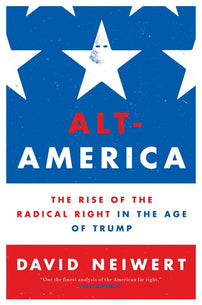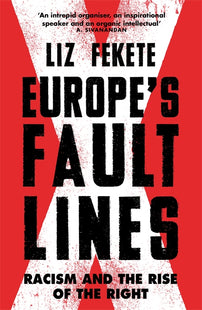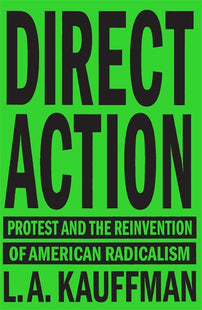The Need to Confront the Alt-Right
The University of Michigan is preparing for a visit from white supremacist Richard Spencer. If past is prologue, then the UM administration’s policy will tend toward disengagement and caution, rather than effective resistance.

Michigan residents are preparing for a visit by white supremacist Richard Spencer. The threat of a lawsuit has pressured the University of Michigan at Ann Arbor to allow Spencer to speak. If past is prologue, then the UM administration’s policy will tend toward disengagement and caution, rather than effective resistance.
We have seen this all before. The most recent media stunt staged by Richard Spencer was at the University of Florida in Gainesville. This was the first such event following the deadly rally at Charlottesville, Virginia. As with past events, there were challenges by the university administration to his presence, which were overturned on a constitutional basis.
Then came the dire warnings. A rattled administration, inundated with calls from concerned UF parents, put out a series of press releases warning students to stay away from the event. Later, University President Fuchs remarked that the Alt-Right organizers, “want you to yell and scream, you're doing what they want you to do...My hope is that students stay away and not fall for it.”
The very same attitude is already palpable amongst U-M officials and commentators. Their President, Mark Schlissel, issued this advice:
We can ignore him [Spencer], reject the hate and evil he espouses, and offer support to those he targets with his racist and discriminatory views...
We can also deprive him of the attention he needs to survive and deny him the crowds he craves. Imagine the power of a room mostly empty, with his only audience being a few followers surrounded by hundreds of empty seats.
These remarks echo countless other administrators and local government officials over this past year. Uniformly, they all tout the prudence of disengagement and isolation. Anything else, they say, fosters further conflict and raises the profile of white supremacists.
Schlissel and Spencer’s conflict will be between an administrator who wants order and calm, and, on the other hand, a provocateur who wishes to inflame racial passions.
The administrative language of prudence and depoliticization belies an underlying pessimism. It is the belief that any direct confrontation will inevitably bring out the worst in human nature (either the spread of racist ideas themselves, or else the violent, chaotic reaction to them); it is a fear and loathing of the masses. What seems to be a “hope for the best” optimism — that ignoring the problem of racism will defuse the situation — is actually a symptom of dread. And yet history shows that an unopposed racism will simply grow, and eventually become hegemonic.
But what makes for effective opposition? Mere disgust in racist ideology is not enough, and may even lead to paralysis — an exasperated rejection of all things political. To oppose the Alt-Right, there has to be the formation of a positive, countervailing worldview.
White chauvinism, misogyny, and authoritarianism have to be opposed by the strident affirmation of an egalitarian humanism. Without such a positive, unifying belief, there can be no hope of mobilizing sufficient numbers of people to protest.
Building confidence in an anti-racist agenda will occur through innumerable, everyday interactions. Subtle insinuations of chauvinism and bigotry have to be called out, whether these occur in the breakroom or at the holiday party. We must be armed with empirical refutations of Alt-Right lies about immigrant crime rates and Anti-Jewish conspiracy theories.
But we have to confront the reality that Alt-Right counterculture is cropping up in unexpected places. It is no longer the Archie Bunker persona, drunk on eggnog, who has to be handled; it is now the twenty-something hipster in north Brooklyn.
Chic artist neighborhoods are now marked by devotees of the Golden Dawn and the Proud Boys. Their play at cultural hegemony is played out over shock jock interviews and subversive art shows. This counterculture channels frustrated youth, feelings of emasculation, economic stagnation, and cultural impotence.
The new front lines of the culture war are now located in the coffeehouse, the pool hall, and the dive bar. The barista's offhand comment about immigrants or Jews matters. It is a litmus test for what people feel comfortable saying out loud in public. When these comments go unopposed, it sends a definite signal to the politically uncommitted bystander. It says to them that anti-racists don’t have a genuine confidence in their own ideas, that they are embarrassed by them. And by contrast, it implies that bigots are bravely willing to “speak truth to power” against a suffocating PC culture.
This climate of polite resignation in the face of such subtle, but ever-present, bigotry is how the Alt-Right plans to win this newest iteration of the culture wars. The effects of this will be seen at flashpoints like Gainesville, Charlottesville, and now Ann Arbor.
To clarify: we shouldn’t publicly debate the Alt-Right. There is no chance for winning over the hearts and minds of hardened racists, at least not during mass protests and demonstrations. Nor should we legitimize the Alt-Right by sharing the town-hall stage, the news roundtable, or other public platforms.
But direct opposition to their rallies is crucial, and so is the subtler engagement with their toxic rhetoric at large. The task today will be to expose Alt-Right talking points for the blatant lies that they are. We must place in the hands of anti-racists the empirical and theoretical tools for dismantling white supremacy.
Samantha Miller is a graduate of Columbia University. She is currently a teacher in Manhattan.
Landon Frim is associate professor of philosophy at St. Joseph’s College-New York.
Harrison Fluss is a corresponding editor with Historical Materialism and a lecturer in philosophy at St. John's University and Manhattan College
[book-strip index="1" style="display"]



